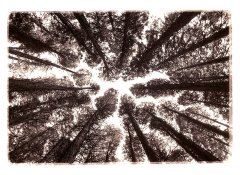KenS
Member
After more than about 65 years under the dark-cloth, and 25+ years making photographs for scientists in Agriculture Canada's Research Branch, my daughter challenged me 'do' (ie 'earn) my BFA at the nearby University. The questions posed during that 'experience' that were most difficult to answer was (usually) "What does that image 'mean'? I would let about 30 seconds 'pass' and ask the prof "What do YOU see in that image. There was 'usually' some 45 seconds (or so of silence (and no 'physical movement by my fellow class-mates) and I would inquired "what do YOU see?.. Might you have chosen a different 'position' or 'framing"
The replies were usually absent (and followed by 'more 'silence') and we were then 'pressed on' to view the next student's 'presentation'
Ken
The replies were usually absent (and followed by 'more 'silence') and we were then 'pressed on' to view the next student's 'presentation'
Ken




